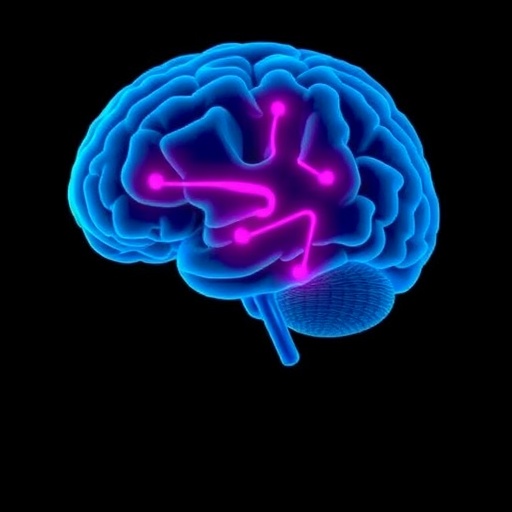In a groundbreaking development that redefines our understanding of persistent developmental stuttering, a team of neurologists from Goethe University Frankfurt and Münster have pioneered an innovative approach employing deep brain stimulation (DBS) targeted at the left thalamus. Stuttering, a speech flow disorder historically misattributed solely to psychological factors, is now increasingly recognized as a multifaceted neurological condition involving distinct genetic, anatomical, and neurophysiological components. This novel intervention showcases remarkable promise in extracting the biological underpinnings of stuttering and represents a potentially transformative leap forward in therapeutic strategies.
Stuttering affects millions worldwide, manifesting as involuntary disruptions in the fluency of speech. Decades of research have illuminated that these disruptions are not simply behavioral anomalies but correlate with measurable differences in brain structure and function. Specifically, individuals who stutter exhibit altered neural connectivity patterns within the speech production network, impacting how auditory information is integrated with motor commands necessary for coherent speech articulation. PD Dr. Christian Kell, head of the Cooperative Brain Imaging Center at Goethe University Frankfurt, articulates that the auditory cortex of the left hemisphere, which is proficient at parsing rapid successive signals, exhibits diminished interaction with the motor cortex in those who stutter. Consequently, the brain resorts to the right hemisphere, less adept at processing the swift exchanges that characterize fluent conversation, thereby precipitating speech blocks.
Although stuttering is not traditionally classified as a disease, its profound psychosocial impact warrants attention. Keller expresses a nuanced perspective advocating for societal acceptance of stuttering as a neurodiverse characteristic, while simultaneously emphasizing the necessity for medical interventions for individuals deeply distressed by their speech difficulties. This dual stance underscores the evolving ethos in neurological rehabilitation, balancing empathetic acceptance with cutting-edge clinical innovation.
The crux of this study involved the surgical implantation of a microelectrode into the left thalamus, a deep-seated relay hub integral to signal transmission across disparate brain areas. The thalamus orchestrates cortical-subcortical communication, acting as a modulator essential to sensorimotor integration. Employing finely calibrated electrical currents, researchers enacted precise stimulation protocols aimed at modulating aberrant neural circuits implicated in stuttering. Post-implantation, the patient’s speech was rigorously assessed using standardized fluency metrics to quantify therapeutic efficacy.
Over subsequent months, the outcome surpassed expectations; stuttering frequency diminished by nearly half, with a corresponding reduction in severity. Intriguingly, when stimulation was covertly discontinued, the patient’s stuttering gradually intensified, affirming a direct, causal relationship between DBS and speech fluency enhancement. This temporal lag in symptom reemergence contrasts with typical DBS responses seen in Parkinson’s disease, where symptom reversal is immediate upon stimulation cessation. Keller hypothesizes that the slower regression may be partially attributable to neuroplastic adaptations fostered through sustained fluency during stimulation, suggesting DBS might engender durable alterations in neural dynamics beyond transient modulation.
This pioneering case imposes profound implications for the conceptualization of stuttering as a neurobiological disorder amenable to neuromodulation. Importantly, it opens avenues for exploring how subcortical structures like the thalamus regulate speech motor control and how their dysfunction contributes to developmental speech impediments. The success of DBS in this context challenges prevailing dogma, heralding a paradigm shift that integrates neurotechnology with speech pathology.
Despite the encouraging results, Keller is judicious in advocating for broader application, emphasizing the invasiveness and risks tethered to neurosurgical procedures like DBS. Patient selection criteria, risk-benefit analyses, and ethical considerations must anchor future research, ensuring that therapeutic interventions align with individual needs and safety profiles. Moreover, the team is investigating noninvasive alternatives such as transcranial magnetic or electrical stimulation modalities that may replicate the neuromodulatory effects without surgical intervention.
The trajectory of this research underscores the importance of interdisciplinary collaboration spanning neurology, psychiatry, genetics, and biomedical engineering. As stuttering involves complex gene-environment interactions and dynamic brain network dysfunction, multifaceted strategies that combine neural stimulation with behavioral therapies might optimize outcomes. Precision medicine approaches harnessing genetic biomarkers and neuroimaging data could personalize treatment paradigms, ushering in an era of tailored interventions for speech disorders.
The implications also extend to our fundamental understanding of hemispheric specialization and brain plasticity. Findings that the right hemisphere compensates suboptimally for deficits in left hemisphere circuitry highlight the delicate balance in lateralized brain functions essential for fluent speech. Therapeutic modulation via the thalamus illustrates how manipulating integrative hub regions can recalibrate distributed neural networks, restoring functionality disrupted by developmental anomalies.
As scientific inquiry advances, longitudinal studies involving larger cohorts will be paramount to validate the durability, efficacy, and safety profile of thalamic DBS in stuttering. The integration of electrophysiological monitoring alongside behavioral assessments will deepen insights into mechanistic pathways and optimize stimulation parameters. Concurrently, qualitative research exploring patient experiences will inform supportive practices mitigating psychosocial burdens accompanying stuttering.
Ultimately, this landmark study heralds a new frontier in tackling persistent developmental stuttering through neurotechnological innovation. It illuminates the intricate neurobiology underlying speech production, dismantling antiquated misconceptions, and promising therapeutic relief for individuals whose voices have been constrained by neurological barriers. With cautious optimism, the scientific community anticipates subsequent research building upon this foundation, aspiring toward comprehensive, accessible treatments that empower fluent communication for all.
Subject of Research: People
Article Title: Left thalamic deep brain stimulation for persistent developmental stuttering
Web References: 10.1016/j.jfludis.2025.106147
References: Kell et al., Journal of Fluency Disorders, 2025
Image Credits: Kell et al., J Fluency Dis 2025




